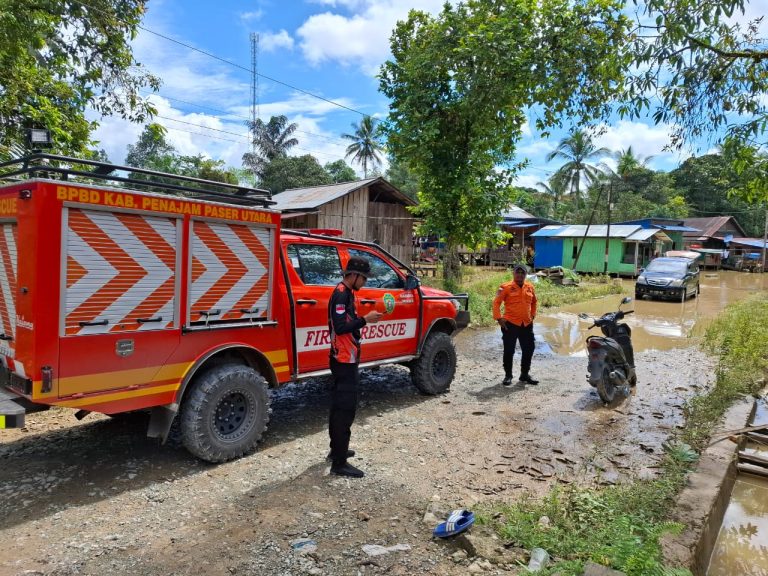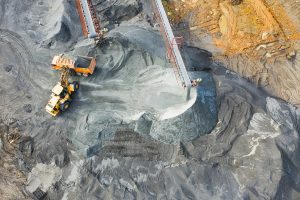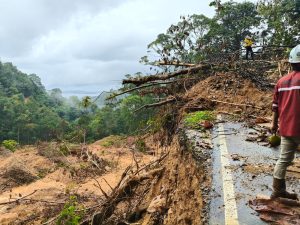Jakarta — A combination of heavy rainfall, tidal flooding, and land fires has disrupted life in multiple regions across Indonesia this week, according to the National Disaster Management Agency (BNPB), on Thursday, May 29. While most incidents are tied to ongoing hydrometeorological hazards, authorities also responded to forest and peatland fires fueled by extreme heat and dry conditions.
In Penajam Paser Utara Regency, East Kalimantan, heavy rainfall from early morning until late afternoon on Tuesday, 27 May, triggered flooding in Sepaku District, inundating 25 homes in Kelurahan Sepaku. Rising river levels affected 70 residents from 25 households, with water levels reaching 30–40 centimetres. By Wednesday, water had begun to recede, and local BPBD officials continued to monitor the situation.
In Sampang, East Java, tidal flooding (banjir rob) occurred in Banyuanyar subdistrict on Wednesday, 28 May, as high tides pushed seawater into streets and residential areas. The flood affected 75 households and homes. Although no casualties were reported, BPBD Sampang and supporting teams conducted assessments and distributed emergency supplies. By evening, conditions had improved as tides receded and weather cleared.
Further tidal flooding was reported in Bima City, West Nusa Tenggara, where rising sea levels flooded fish and shrimp ponds across Bolo, Woha, and Palibelo districts. While no injuries were reported, residents suffered material losses, including the destruction of 31 hectares of aquaculture ponds, a damaged road, and the loss of milkfish ready for harvest. Local authorities conducted assessments and helped coordinate repairs. By Wednesday, water levels had begun to recede, and residents started restoring the damaged fish farms.
Not all disasters were water-related. In Mukomuko Regency, Bengkulu Province, a forest and peatland fire broke out on Sunday, 25 May, in Rawa Mulya Village, XIV Koto District. The fire spread rapidly due to hot weather, dry peatland, and strong winds, burning through 15–20 hectares of oil palm plantations. Although no casualties were reported, the origin of the fire remains under investigation by law enforcement.
As of Wednesday, 28 May, the fire had not been fully extinguished. Emergency teams continued efforts to contain the blaze by digging water wells 2 to 2.5 meters deep and creating firebreaks to prevent it from spreading further. Firefighting teams, supported by excavators, are working around the clock to isolate burned areas and prevent further damage.
In response to the growing risks of flooding, tidal surges, and wildfires, BNPB has called on local governments and communities to remain vigilant. Key recommendations include routine drainage maintenance, riverbank cleaning, construction of temporary water storage systems, and developing household and neighbourhood-level emergency plans.
“Preparedness starts at the community level,” said Abdul Muhari, Ph.D., Head of BNPB’s Data, Information, and Disaster Communication Center. “We urge every family and village to equip themselves with a disaster readiness kit and a clear evacuation plan.”
BNPB continues to coordinate with provincial and district-level disaster agencies to monitor risks and deliver swift assistance to affected populations. (nsh)
Banner photo: The BPBD Penajam Paser Utara team and related elements conduct monitoring in Sepaku Sub-district, Penajam Paser Utara Regency, East Kalimantan Province, on Wednesday (28/5). (Photo source: BPBD Penajam Paser Utara)















